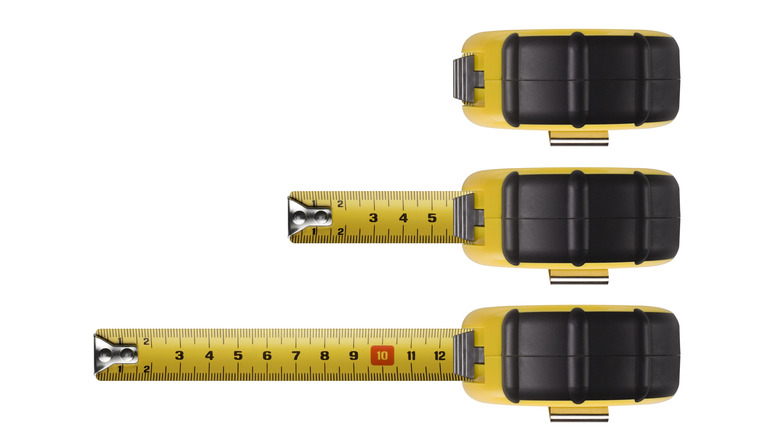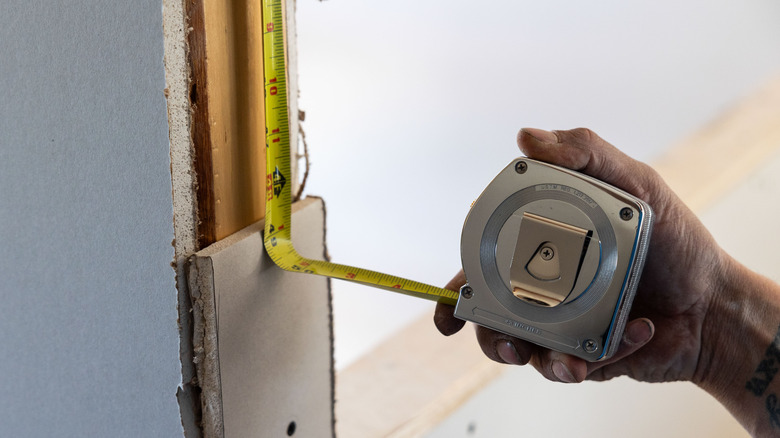3 Hidden Tape Measure Functions Designed To Help You As You Work
The tape measure doesn't seem like a jack-of-all-trades device, as its main function, measuring things, is in the name. It is among the tools that no DIY enthusiast should be without. Everyone tends to use it to measure long distances, except for those rare moments when it comes loose and angrily snaps back into position. It's a fairly simple tool that hasn't changed a great deal since the first steel tape measure was patented in Britain by James Chesterman in 1829. The next major change didn't come until 1868 when a Connecticut man named Alvin J. Fellows added the spring-click tape measure, which allowed users to lock it in place the way we do now while measuring a longer distance.
So it may come as a surprise to learn that a few more hidden features have since been added to the modern tape measure, which may cause you to this common tool in your drawer in a whole new light.
Scribing tool, and why the hook is loose
What isn't a surprise, is that nearly all the hidden features are an offshoot of the measuring. Take the little curved slot on the end hook. It's not there for aesthetic reasons but rather enables users to grab onto the tip of a nail or screw to hold it in place, instead of asking a friend to hold it. So if you're measuring a long flat surface and there's no one else around to hold it for you, you can simply lightly tap in a nail or screw, and then hook it through the tiny slot so the tape measure actually stays in position. It tends to work better than sliding the tape measure hook into a groove in the floor, and then worrying it's going to come loose any second.
Right underneath that little nail slot is another feature easy to overlook: a serrated edge. This isn't there in case a friend isn't around, it's there in case you don't have a marking tool handy like a pencil or pen, and don't want to have to find the exact spot again while you go looking for one. By simply swiping it back and forth over the surface, as this video from The Maker displays, you'll create a harmless little mark that's still totally visible and will save you when you realize you forgot to tuck a pencil over your ear.
The adjustable hook
They do pack quite a bit into the little tip at the end of the tape measure, and while that hook may seem like it's loose after years of wear and tear, the end of the tape measure is supposed to be that way. A tape measure, unlike a good ruler, doesn't end on the exact point of the measurement label, because they had to place that little metal gripper in there. So as a result the first inch of the tape is short by 1/16 of an inch (the size of the gripper), which doesn't seem like a lot and isn't really perceptible on sight, but would certainly add up over time for projects that require precision.
It's a feature that comes with the name "True zero." The metal tip is loose so it can shift and create a small gap that enables a truly accurate reading on an outside surface, without counting the metal tip in your measurement Alternatively, if you're measuring within a space like a window frame or a drawer slot, you'll instead want to count that 1/16 of an inch thickness in the measurement, shifting the metal piece back into place to cover the gap.
The tape measure doesn't quite have as many features as your average Swiss Army Knife, but it's not the one-trick pony it seems and adds some very helpful features into a very, very small space.


